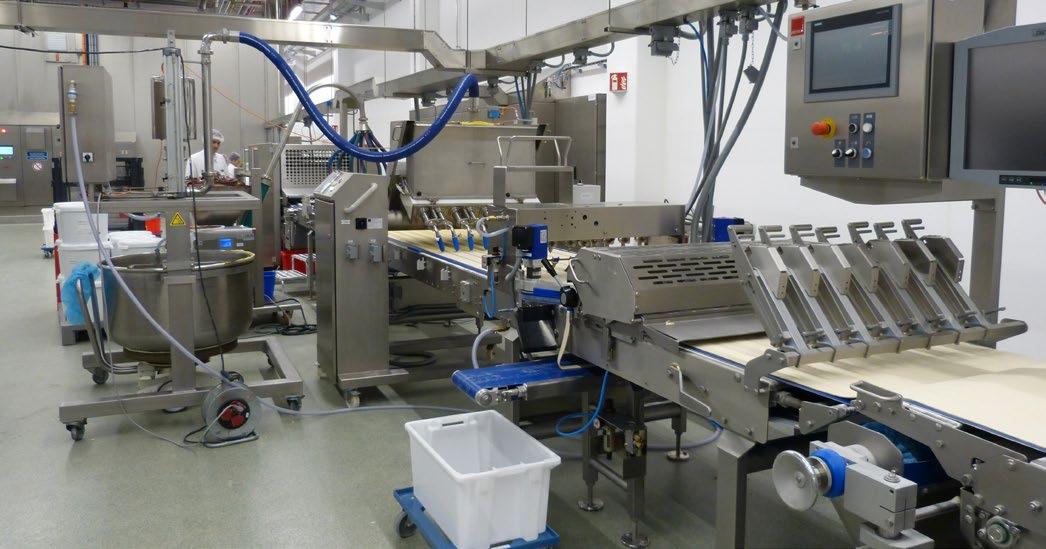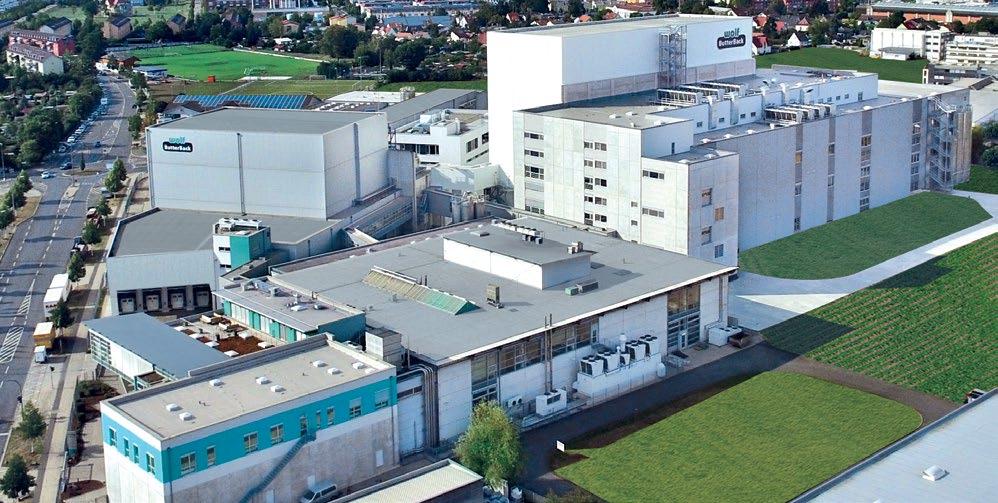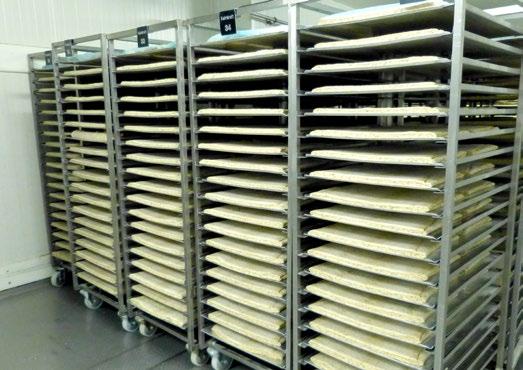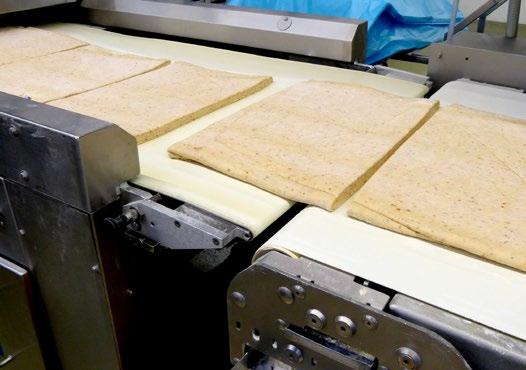
2 minute read
Fit for the future
Wolf ButterBack KG, a premium frozen baked products manufacturer in Fürth, is growing dynamically and is investing around EUR 50 million in a new third factory. The company had to expand production capacity to meet rising demand.
+Wolf ButterBack KG, Fürth, has grown very dynamically in recent years. The company was founded by master baker Erwin Wolf in 1992 and in the year 2000 it moved over the nearby city boundary from Nurnberg to Fürth, where Factory 1 was built on a green field site. Around 50 employees manufactured premium-quality frozen baked products, mainly for the baking sector. For reasons of age, Master Baker Wolf sold the company in 2004 to Martin Braun and thus to the Oetker Group. This was followed by further dynamic growth and the construction of Factory 2 in 2005, again on the Magazinstrasse site.
Approx. 550 staff are currently employed. The plan for 2019 is to have around 600 employees working for the company. This is possible because Wolf ButterBack has invested around EUR 50 million in Factory 3, and has enlarged the Magazinstrasse site. Ernst Stengel, Executive Board Member responsible for Production and Purchasing, has looked after the new building from the first to the last second. Stengel explains: “After an intensive 18-month construction period, our Factory 3 came on stream in April.” The new building has three stories. Two new production lines are already operating. One more plant will follow, and altogether the factory has capacity to install six production lines. The company also invested in a new, fully-automatic computer-controlled high-bay deep-freeze warehouse more than 42 meters high, with space for 8,700 pallets.
Energy efficiency
Ernst Stengel explains: “Of course, important aspects such as energy efficiency, production safety / security and a responsible attitude towards climate and the environment were taken into account when enlarging the site. For example, part of the electric power in Factory 3 is generated by a fuel cell. This is already the company’s second, and the resulting oxygendepleted vent gas (reduced to approx. 11%) is re-used as fire protection in the high-bay warehouse. Modern technology is also used for heat recovery, in which the entire waste heat from the refrigeration systems is used as process heat, e.g. in fermentation chambers, to produce hot water and to heat the premises. Likewise, a new central biological wastewater treatment plant for the whole site was installed. Of course, we use natural refrigerants such as ammonia and CO 2 in the refrigeration systems. According to Stengel: “When planning Factory 3, we took care to ensure we can achieve an overall doubling of the existing production capacity. The building, the technical services supplies and even the refrigeration plants are already prepared now for further growth.”
The company’s location also has space available for an additional building extension. With today’s dynamic growth, the Executive Board estimates that this extension – Construction Phase 2 – might take place in the mid-2020s. Marketing and Communications Manager Tanja Böttcher explains: “We have recorded high single-figure growth for a number of years.”
Factory 3
+ January 2015
Acquisition of the neighboring 15,000 m² site

Total site area: 32,000 m²
+ November 2016
Start of construction, Factory 3
First construction phase, three-story for up to six production lines
High-bay warehouse 2 with 8,700 pallet storage spaces
Height: 42.5 m
+ Since 09.04.2018
Trial operation on two lines
+ Since July 2018 onwards
Production goes live
The two production lines currently in Factory 3 for high sales volume sweet or savory filled products. Up to six production lines are possible in the first construction phase


Electricity is generated by a fuel cell
Use of the oxygen-depleted exhaust gas (11%) as fire protection in the high-bay warehouse
Central biological treatment for wastewater from all three factories
A system to separate wastes into biowaste, film, metal, paper and residual waste
+ The site
Bridges and conveyors interconnect all three factories.
A one-way traffic system operates on the crossings between the factories. Up to eleven trucks can be prepared for dispatch simultaneously, and six truck maintenance bays are available. An amenities room with sanitary facilities for truck drivers has also been installed
+ Outlook
Jobs for up to 700 staff are planned at the site. Construction Phase 2 is being planned.










